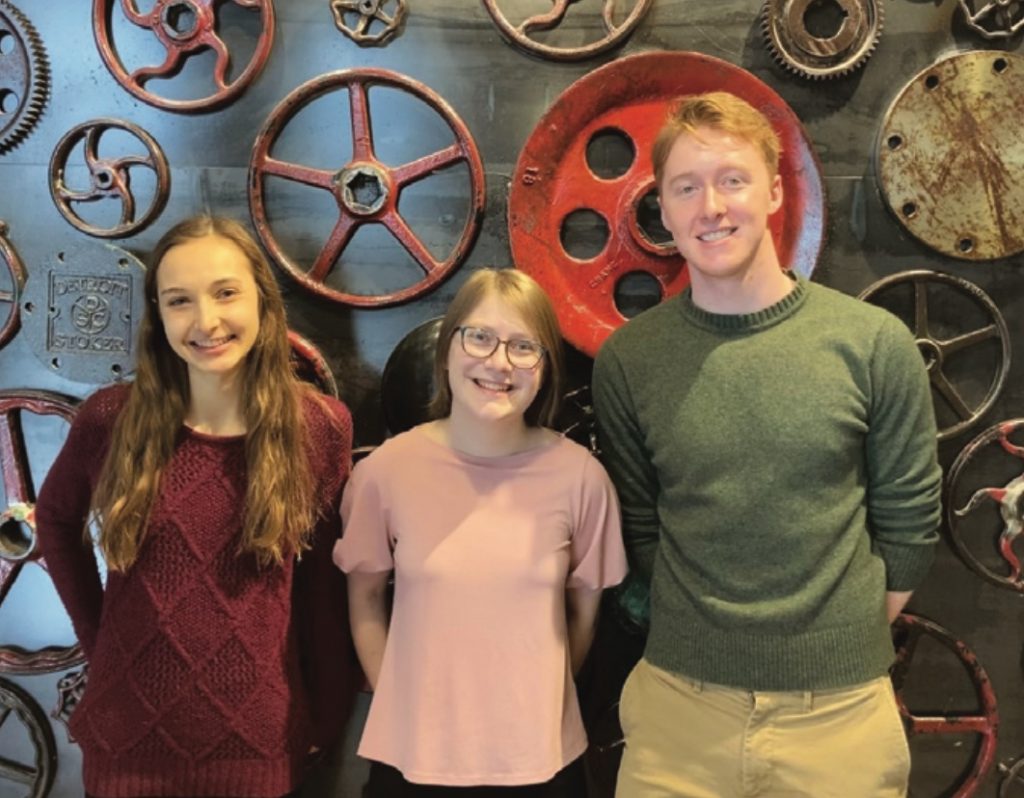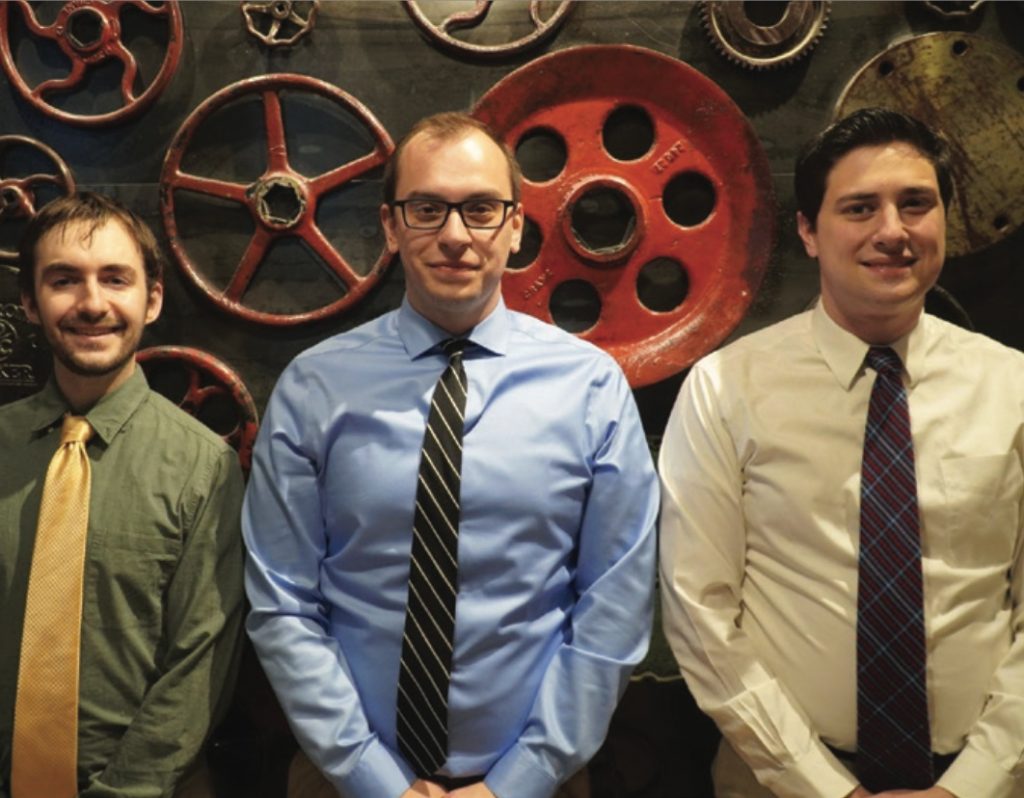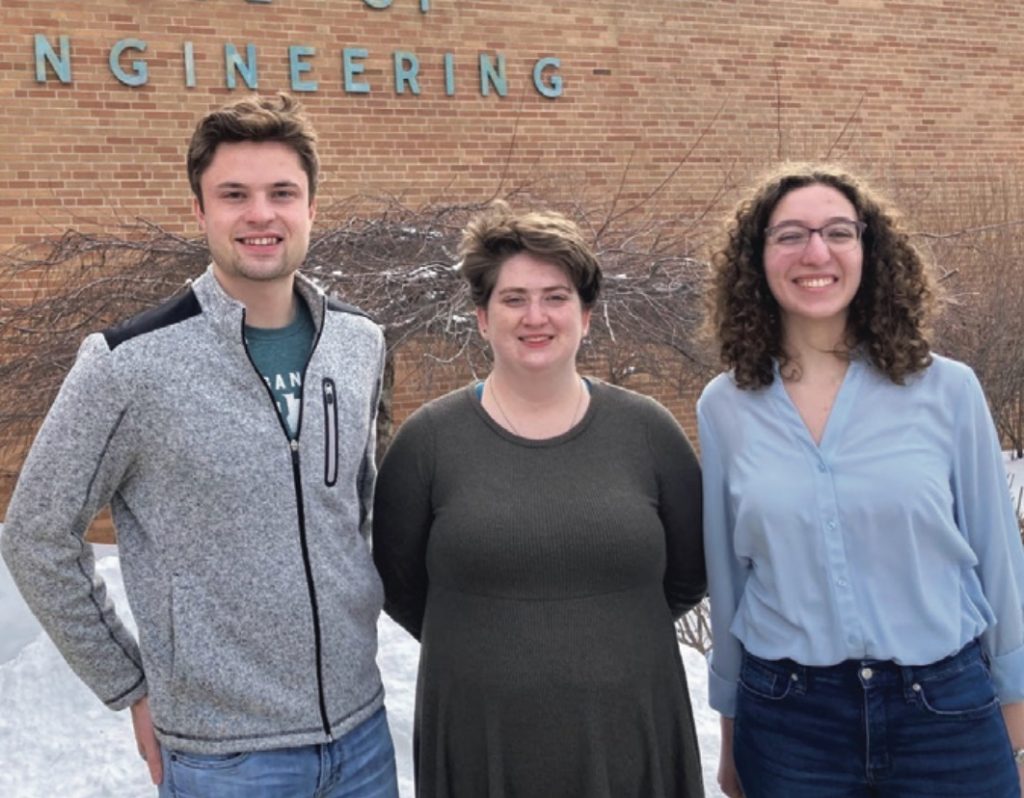Course Description
MSE466 is a senior level course for Materials Science & Engineering majors providing students with a team-based capstone design experience. A major aspect of this course is to have students apply their course-learned background knowledge and skills in materials science and other disciplines to real-life design problems. A failure analysis investigation (FAI) fits this context. Failures are a major motivating factor for promoting more innovative designs or design changes. A failure analysis investigation provides a unique platform to design and to solve real-world engineering problems via a systematic engineering approach. By focusing on a specific design failure, the student teams learn how to confront an open-ended problem that requires them to develop a strategic design plan and to execute the methodology for assessing how and why the failure occurred. The analysis is conducted using established investigative procedures and constraints for conducting failure analysis investigation. This semester, there are ten 3-member teams working on ten real engineering failures.
MSE 466 Fracture and Failure Analysis
Successfully completed team projects culminate in a comprehensive written final report and a strategic redesign plan to improve the design and mitigate future failures. For Design Day the teams present their findings in twenty-minute presentations. For 2022, the ten teams are conducting the following failure analysis investigations:
Honda Axle Failure Analysis
Time: 8:00 a.m.
Team Name: The Axlerod Analyzers
Failure analysis methods were used to determine the cause of failure for a 2003-2005 Honda front axle that was broken in half. Examining the topography and doing research on the product’s history of the specimen is key in getting details on the specimen. The initial step to determining the most likely cause of failure was documentation of the specimens. Macrophotos and micrographs were taken using a DSLR camera and a stereomicroscope, respectively. The sample was then sectioned into smaller pieces so the specimens could be further examined through testing methods, like metalography, scanning electron microscopy, hardness testing and X-ray spectroscopy. These techniques revealed characteristics of the fracture surfaces, including surface roughness and patterns, how ductile or brittle the fractures were, and chemical makeup. ASTM handbooks were also used to gain a better understanding of the material and its properties. These tools for analysis indicated how the axle ultimately failed.
Failure Analysis of a Hopkins Snowbrush Bearclaw Fracture
Time: 8:20 a.m.
Team Name: The Icebreakers
Ice scrapers and snow brushes are a common necessity for individuals living in climates that experience winters with temperatures below freezing. This report analyzes the failure of a plastic ice scraper that was broken into two pieces after several years of use. The type of plastic had to be identified in order to understand the nature of its mechanical properties and why the failure occurred, and several test methods were performed, including both destructive and non-destructive testing. The fracture surfaces were observed using stereomicroscopy and SEM. Finite element analysis was performed in order to test whether the failure occurred at an area of high stress.
Fracture Analysis on a Cast Aluminum Chain Link Gate Closer
Time: 8:40 a.m.
Team Name: The Case Closers
A chain link gate closer broke in a residential backyard in metro-Detroit during the summer of 2021. Its failure was analyzed using various techniques to determine why it failed. Initially, macroscopic and microscopic images were taken using a camera and stereomicroscope. Then, non-destructive testing techniques, including dye penetration and creation of a replica, were used to analyze the fracture surfaces. Scanning electron microscopy was used to understand the nature of the porosity and examine the fracture surface morphology. Microhardness testing was performed along with density testing for material characterization. With the use of other techniques, the gate closer’s failure was identified.
Examining the Failure of a Swordfish 100mm Bench Vise
Time: 9:00 a.m.
Team Name: East Lansing Vice
Vises are used both in industrial settings and home workshops to firmly restrict any part that needs work done, such as grinding, cutting, or bending. The part is secured by bringing the two sides of the vise together with a lever and screw. A Swordfish 100mm bench vise featured a complete fracture from the base of the vise. The fracture surface and surrounding area were thoroughly documented and an array of analysis techniques were utilized to better understand what caused the vise to fail, including stereomicroscopy, chemical analysis, and scanning electron microscopy (SEM). Details surrounding the chemistry and microstructure of the material revealed a more complete story of what eventually led to the vise fracturing.
Failure Analysis of a Rotary Oil Pump
Time: 9:20 a.m.
Team Name: Engine Turm-oil
An off-brand GM rotary oil pump was selected for analysis after the rotary gear mechanism failed, causing catastrophic engine failure. Oil pumps are critical for internal combustion engines. They provide lubrication and cooling to the rotating assemblies inside the engine. The failure occurred when the engine control unit (ECU) failed to limit the RPM of the engine. The part was studied using stereomicroscopy and macrophotography to study the part’s fracture surfaces. Energy dispersive X-ray spectroscopy (EDS) was used to find the part’s chemical makeup. Hardness testing was used to characterize the materials inside the pump. Several cross-sections were taken to determine the processing technique used to manufacture the part. This data was compared to an exemplar part that was known to meet GM specifications.
Failure Analysis of a Torque Wrench Driver
Time: 9:40 a.m.
Team Name: Wrench in the Plans
A torque wrench driver is a bolt that transfers an applied torque from a lever to a socket. On its first use, a new chrome-vanadium (CrV) steel torque wrench driver failed while loaded below the rated maximum torque. Finite element analysis was used to render a model in three dimensions and simulate the stresses and failure under the approximate loading conditions. Metallography and chemical analysis were used to analyze the microstructure, while scanning electron microscopy (SEM) and stereomicroscopy were used to investigate the fracture surfaces and help identify reasons for failure.
Failure Analysis of Lift Truck Transmission Case
Time: 10:00 a.m.
Team Name: Porosity Prosecutors
Quality control during the production process is critical to ensure that no faulty products are sent to the consumers. Transmission casings for a lift truck produced in an Ohio foundry failed to meet these standards during a routine inspection. In order to gain more information about the manufacturing process, consultation was conducted with the manufacturer in regards to the casting specifications and failure criteria. The casings showed multiple signs of porosity within its surfaces. To establish a testing procedure, the surfaces of the casting were examined and documented followed by further research into the field of metallurgy. The cause of the manufacturing failure was determined through a series of tests, including, ultrasonic, dye penetrant, microstructural and chemical analysis, SEM, hardness testing and more.
Failure Analysis of a Failed Pinion Gear
Time: 10:20 a.m.
Team Name: Facts and Pinions
The purpose of this study was to determine the reasons responsible for the failure of a pinion gear in a 1992 Mazda Miata. Stereomicroscopy was used to investigate the macroscopic aspects of the fracture and acquire a 3-dimensional model for further in-depth inspection. To identify the metal that the pinion gear was composed of, a chemical analysis was done.This was complemented with sectioning of the pinion gear followed by scanning electron microscopy, which allowed assessment of the micromechanical failure mechanisms. A replica was created to capture loose surface debris and the fracture was cleaned to allow further inspection of the surface. Metallography was used to assess the microstructure in conjunction with microhardness testing to determine if the pinion gear was carburized. Macrohardness testing was also done to assess the general mechanical behavior.
Failure Analysis of Residential Cabinet Hinge
Time: 10:40 a.m.
Team Name: Unhinged
A crucial part of the materials science discipline is the ability to determine the causes and mechanisms of failure, which enables the development of safer products. This project sought to determine the cause of fracture in a residential kitchen cabinet hinge. Many techniques such as microscopy, chemical analysis, and metallographic analysis yielded insight into the microscopic anomalies, chemical composition, and microstructure of the part respectively. This knowledge was compiled to create a robust summary of the composition and high-stress areas of the hinge, which allowed us to determine the cause of failure for this part.
Analysis of Failed Wheel Bearing
Time: 11:00 a.m.
Team Name: Wheely Worn Out
Are your car’s wheels squawking, wobbling, or making some other kind of weird noise? If so, it is probably time to replace the wheel bearing. Wheel bearings can fail in a wide variety of scenarios. This project focused on discovering the main failure mechanism for the wheel bearing. The bearing was sealed so the first step was to carefully disassemble it without causing further damage. Once the bearing had been disassembled, all of the parts were analyzed through microscopic analysis, hardness testing, and a few non- destructive techniques. These tests led us to determine the cause of failure and possible improvements for future bearings.













